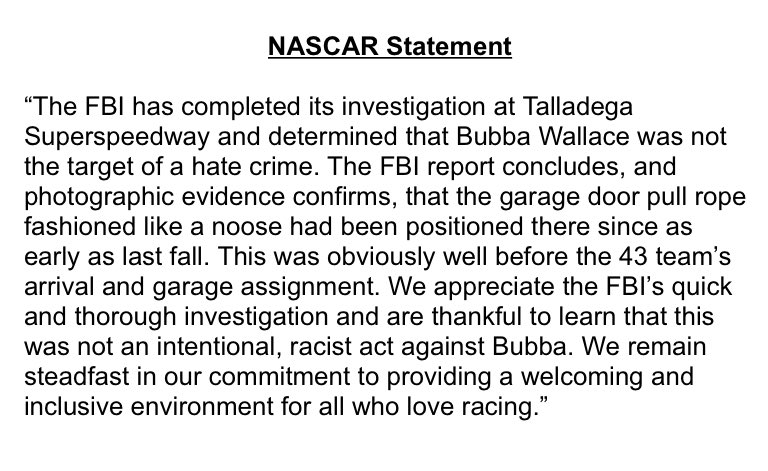nsacpi
Expects Yuge Games
Interesting op-ed from Harvard economist Roland Fryer on police treatment of blacks.
https://www.wsj.com/articles/what-the-data-say-about-police-11592845959?mod=hp_opin_pos_2
I have led two starkly different lives—that of a Southern black boy who grew up without a mother and knows what it’s like to swallow the bitter pill of police brutality, and that of an economics nerd who believes in the power of data to inform effective policy.
In 2015, after watching Walter Scott get gunned down, on video, by a North Charleston, S.C., police officer, I set out on a mission to quantify racial differences in police use of force. To my dismay, this work has been widely misrepresented and misused by people on both sides of the ideological aisle.
• There are large racial differences in police use of nonlethal force. My research team analyzed nearly five million police encounters from New York City. We found that when police reported the incidents, they were 53% more likely to use physical force on a black civilian than a white one. In a separate, nationally representative dataset asking civilians about their experiences with police, we found the use of physical force on blacks to be 350% as likely. This is true of every level of nonlethal force, from officers putting their hands on civilians to striking them with batons. We controlled for every variable available in myriad ways. That reduced the racial disparities by 66%, but blacks were still significantly more likely to endure police force.
• Compliance by civilians doesn’t eliminate racial differences in police use of force. Black civilians who were recorded as compliant by police were 21% more likely to suffer police aggression than compliant whites. We also found that the benefits of compliance differed significantly by race. This was perhaps our most upsetting result, for two reasons: The inequity in spite of compliance clashed with the notion that the difference in police treatment of blacks and whites was a rational response to danger. And it complicates what we tell our kids: Compliance does make you less likely to endure a beat-down—but the benefit is larger if you are white.
• We didn’t find racial differences in officer-involved shootings. Our data come from localities in California, Colorado, Florida, Texas and Washington state and contain accounts of 1,399 police shootings at civilians between 2000 and 2015. In addition, from Houston only in those same years, we had reports describing situations in which gunfire might have been justified by department guidelines but the cops didn’t shoot. This is a key piece of data that popular online databases don’t include. No matter how we analyzed the data, we found no racial differences in shootings overall, in any city in particular, or in any subset of the data.
Our analysis tells us what happens on average. It isn’t average when a police officer casually kneels on someone’s neck for 8 minutes and 46 seconds. Are there racial differences in the most extreme forms of police violence? The Southern boy in me says yes; the economist says we don’t know.
https://www.wsj.com/articles/what-the-data-say-about-police-11592845959?mod=hp_opin_pos_2
I have led two starkly different lives—that of a Southern black boy who grew up without a mother and knows what it’s like to swallow the bitter pill of police brutality, and that of an economics nerd who believes in the power of data to inform effective policy.
In 2015, after watching Walter Scott get gunned down, on video, by a North Charleston, S.C., police officer, I set out on a mission to quantify racial differences in police use of force. To my dismay, this work has been widely misrepresented and misused by people on both sides of the ideological aisle.
• There are large racial differences in police use of nonlethal force. My research team analyzed nearly five million police encounters from New York City. We found that when police reported the incidents, they were 53% more likely to use physical force on a black civilian than a white one. In a separate, nationally representative dataset asking civilians about their experiences with police, we found the use of physical force on blacks to be 350% as likely. This is true of every level of nonlethal force, from officers putting their hands on civilians to striking them with batons. We controlled for every variable available in myriad ways. That reduced the racial disparities by 66%, but blacks were still significantly more likely to endure police force.
• Compliance by civilians doesn’t eliminate racial differences in police use of force. Black civilians who were recorded as compliant by police were 21% more likely to suffer police aggression than compliant whites. We also found that the benefits of compliance differed significantly by race. This was perhaps our most upsetting result, for two reasons: The inequity in spite of compliance clashed with the notion that the difference in police treatment of blacks and whites was a rational response to danger. And it complicates what we tell our kids: Compliance does make you less likely to endure a beat-down—but the benefit is larger if you are white.
• We didn’t find racial differences in officer-involved shootings. Our data come from localities in California, Colorado, Florida, Texas and Washington state and contain accounts of 1,399 police shootings at civilians between 2000 and 2015. In addition, from Houston only in those same years, we had reports describing situations in which gunfire might have been justified by department guidelines but the cops didn’t shoot. This is a key piece of data that popular online databases don’t include. No matter how we analyzed the data, we found no racial differences in shootings overall, in any city in particular, or in any subset of the data.
Our analysis tells us what happens on average. It isn’t average when a police officer casually kneels on someone’s neck for 8 minutes and 46 seconds. Are there racial differences in the most extreme forms of police violence? The Southern boy in me says yes; the economist says we don’t know.
Last edited:


